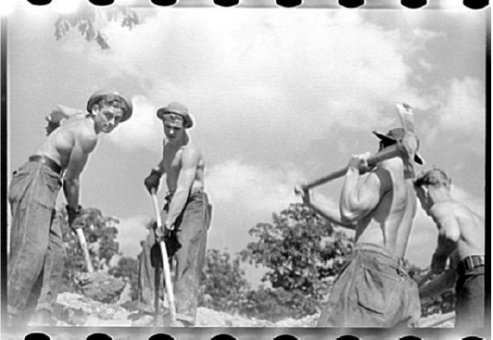The era of the Great Depression and the New Deal was a time of misery and despair for many Americans and others around the world. But it was also a time of innovation and new hope, of previously unimagined federal activism and broad experimentation; and a time in which government action helped improve the lives of millions of struggling people. The New Deal did not solve all the nation’s problems. It did not even succeed at its own most important task – ending the Great Depression; prosperity did not return until World War II created it. But the New Deal did initiate programs and policies of extraordinary imagination and, in some cases, of transformative impact on the lives of many Americans.
The sudden emergence of photography as a major force in modern society during the New Deal was the result of many things: new camera and film technologies; new publications able and eager to publish photographs; a growing appetite for pictures throughout society – and the emergence of a remarkable generation of talented photographers: Dorothea Lange, Russell Lee, Gordon Parks, and many others.
Some of the most powerful photography to emerge from the Depression years was supported by the federal government. Numerous federal agencies used photography to document their activities around the country and to promote their goals, including a relatively obscure New Deal agency, the Farm Security Administration (FSA), working to improve the lot of impoverished farmers and farmworkers. The FSA hired a remarkable group of young photographers whose pictures of America in the 1930s have become part of the cultural legacy of the twentieth century.
The government photographers were artists, and many were also polemicists, hoping their photographs would draw public attention both to social problems and to some of the achievements of the New Deal and of the American people. They also wanted to influence politics and policy, so they did not complain when newspaper and magazine editors cropped their photographs, trying to make them more jarring and more accessible.
The work of the New Deal photographers has survived into our own time, and this impressive exhibit will help a new generation rediscover this important combination of art and politics that helped shape American culture.
~ Alan Brinkley, Allan Nevins Professor of American History, Columbia University
Exhibition curated by Rickie Solinger.
* Note: all captions in the above images are original descriptions given by the WPA photographers.



![“As unemployment benefit aid begins. A line of men inside a division office of the State employment service office, waiting to register for benefits on one of the first days the office was open. They will receive from 6 to 15 dollars per week for up to 16 weeks. Coincidental with the announcement that the federal un- employment census showed close to 10 million persons out of work, [and in line with President Roosevelt’s economic priorities,] 22 states began paying unemployment compensation.” Dorothea Lange: San Francisco, CA. January 1938](https://i2.wp.com/www.roosevelthouse.hunter.cuny.edu/devdev/wp-content/uploads/2012/06/Screen-shot-2012-06-12-at-3.01.09-PM.png?resize=500%2C340&ssl=1)




























